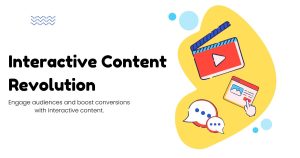What is Emotive Marketing?

Emotive marketing is more than a trendy phrase—it’s a method brands use to form real emotional bonds with their audience. While traditional marketing focuses on product features or benefits, emotive marketing appeals to how people feel.
When you watch a commercial that brings tears to your eyes, or see an ad that makes you smile unexpectedly, that’s emotive marketing at work.
But it’s not just about being emotional. It’s about understanding why people care, what moves them, and how those feelings influence buying behavior.
Why Emotions Matter in Marketing
Emotions shape how people make decisions. This isn’t guesswork—it’s backed by science. Studies in behavioral psychology show that humans are more likely to act based on feelings than logic.
Even when consumers compare prices, read reviews, and check specs, the final decision often boils down to emotion—how a product makes them feel or what it says about who they are.
For example, someone buying a high-end phone may say it’s for the camera. But underneath, they may feel it reflects their status or creativity. The phone didn’t just meet a technical need; it fulfilled an emotional desire.
How Emotive Marketing Works
Emotive marketing works by identifying core emotions like happiness, fear, nostalgia, or belonging—and weaving them into a brand’s message.
It can be used in storytelling, images, music, or language to guide the audience through a shared feeling.
It’s not manipulation. It’s connection. It’s about showing people that a brand understands them, that it shares their values, struggles, or dreams. When done well, it doesn’t just lead to a sale—it builds loyalty.
Example: Think of Popular Campaigns
Consider a campaign where a father teaches his daughter to ride a bike. The product might be life insurance or a family car. But what sticks with you is not the product—it’s the emotion of protection, trust, and care.
These kinds of stories resonate because they reflect human experiences.
Emotive Marketing vs. Traditional Marketing
There’s a key difference in tone and intent. Traditional marketing often says, “Here’s what we sell. Here’s why it’s good.”
Emotive marketing says, “We see you. We understand what matters to you. Here’s how we fit into that story.”
It invites the audience to feel, not just think.
Here’s a Comparison in Approach:
Traditional Message:
“This skincare cream reduces wrinkles in 2 weeks.”
Emotive Message:
“You deserve to feel confident in your own skin again.”
The second one hits deeper because it taps into insecurity, self-worth, and hope—things that go beyond surface-level features.
Brands That Use Emotive Marketing Effectively
Several global brands use this approach not by accident, but as a core part of their strategy.
Nike is a classic example. They rarely talk about shoe specs. Instead, they tell stories of perseverance, triumph, and overcoming limits.
Coca-Cola promotes happiness and togetherness. Their ads often show people connecting during shared moments—not drinking soda, but enjoying life.
Apple focuses on creativity and individuality. Their message isn’t “Buy a phone,” it’s “Think different.”
These brands thrive not because their products are better, but because they understand how to make people feel something.
How Small Brands Can Use Emotive Marketing
You don’t need a million-dollar budget to use emotive marketing. What matters is authenticity.
Start by knowing your audience. What are their fears, goals, struggles, or dreams? Once you understand that, you can build messaging around it.
Let’s say you sell handmade candles. You could say, “Made with natural wax.” Or you could say, “Bring calm into your evenings, one gentle flame at a time.” The second version evokes a feeling—a peaceful moment at home.
Also, be consistent. Emotive marketing works best when the emotion aligns with your brand identity over time. Don’t try to provoke emotion once and then disappear behind dry product posts.
The Role of Storytelling
Storytelling is at the heart of emotive marketing. Humans are wired for stories—they help us make sense of the world and remember what matters.
Even simple stories, like a customer journey or an origin story of your brand, can create a lasting impression if they show vulnerability, passion, or transformation.
Stories bring out emotion naturally. You don’t need to be poetic—just honest and relatable.
Keep in Mind:
-
A story doesn’t need to be long.
-
It needs to be true to your values.
-
And it needs to make the audience feel like they’re part of something.
Visuals and Language
Design plays a big role in emotional response. Color, typography, and imagery all affect how people interpret your message.
Warm colors might evoke comfort. Cool tones might bring a sense of calm or professionalism. Photos of real people can feel more relatable than perfect stock models.
Language also matters. Use simple, clear words. Avoid jargon. Speak like your audience speaks. Let your brand voice be human, not robotic.
Emotive Marketing Builds Trust
Trust isn’t built by being the cheapest or the loudest. It’s built by being real. When people feel that a brand sees them, respects them, and shares something meaningful, they are more likely to buy—and come back.
In a world flooded with options, emotions can be your biggest advantage.
It’s not just about making noise, it’s about creating a connection.
Final Thoughts
So, what is emotive marketing?
It’s the art of moving hearts before moving products. It’s marketing that doesn’t just speak, but listens. That doesn’t just inform, but inspires.
In a time where attention is fleeting, emotions remain powerful. And the brands that know how to touch people emotionally will always stand out.
You don’t need to be a poet. You just need to care—and show it. Once you grasp what emotive marketing is, it’s also worth exploring its potential downsides in emotional branding.





